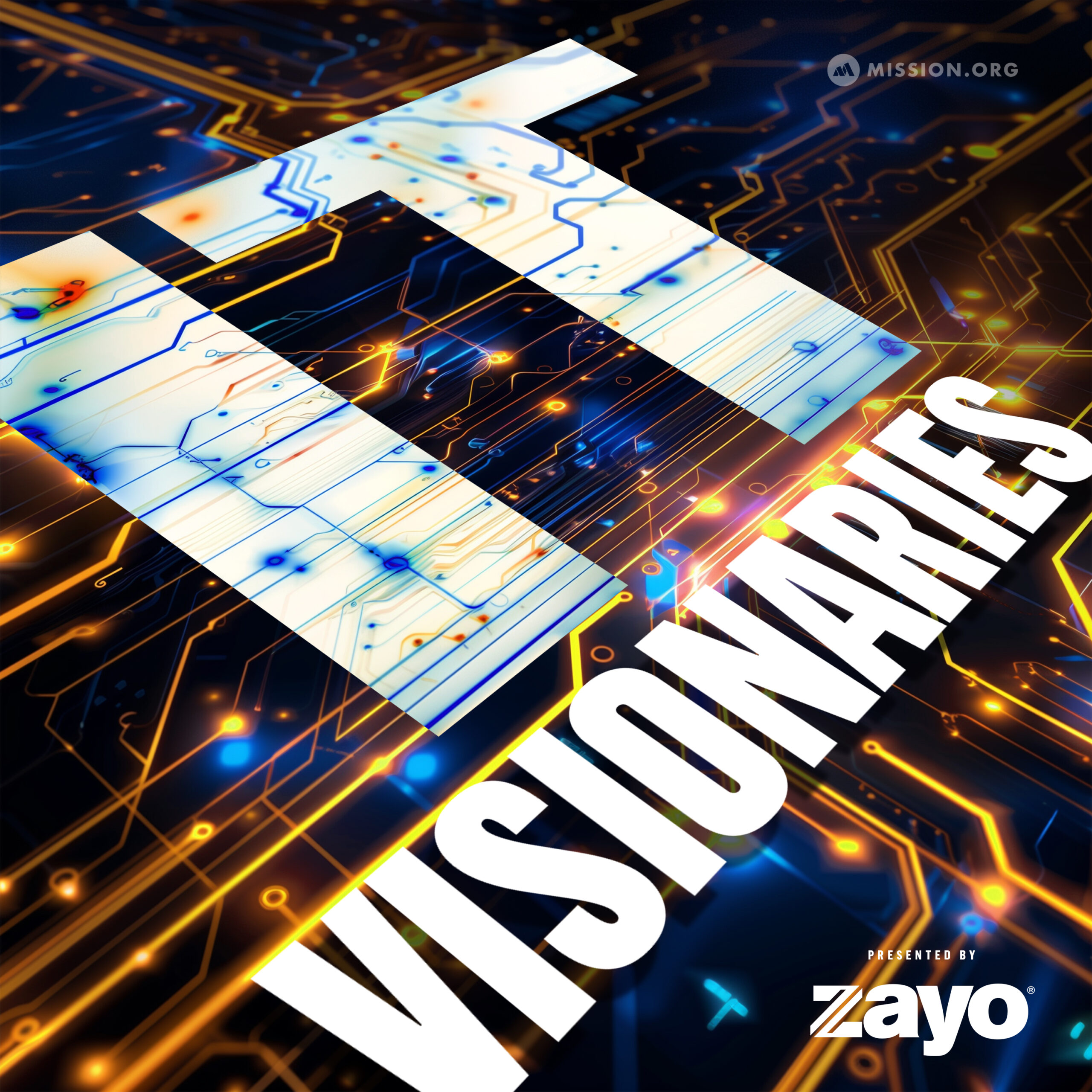Or listen in your favorite podcast app
Apple Podcasts / Google Podcasts / Stitcher
Cole Crawford says that it’s no longer a matter of if we will move to edge computing, it’s a matter of when, and how soon? Cole is the CEO of Vapor IO, which is utilizing colocation facilities and interconnection services in order to bring cloud-like services to the edge of the wireless network. On this episode of IT Visionaries, Cole talks about what that all means, why it makes sense to invest in the edge ecosystem, and what the future of the edge looks like.
And check out the latest State of the Edge report here.
Best Advice: “Stay the course. You have a vision. It’s your vision. Execute your vision.”
Key Takeaways:
- How Vapor IO came to be
- Reasons people are investing in edge technology and infrastructure
- Where the edge ecosystem is headed
Cole’s start in tech
While Cole was an athlete in high school, he said his experience was not that of the stereotypical jock you see on teen dramas. Instead, his group of friends was more “nerdy,” and one of them introduced him to Linux. From that moment on, Cole knew his future was in technology. He loved the art and science of writing code and building something that could last.
“My parents always said, ‘You’re going to be a doctor or a lawyer.’ And then when I discovered Linux, I was like, ‘No, I’m going to do this.’”
“The ability to take something that you know the guts of something great are there and your ability to enhance or extend that to make it do exactly what you want it to do. That freedom was absolutely incredible to me. And that really drew me in both on the creative side of this, because in open source, code is currency. But it’s also art in a way. I mean, you are creating something that is uniquely yours and you know that code if it’s good in a social setting, depending on the various projects that you might be working on, could live on for decades.
Founding Vapor IO
Through his work with the Open Compute Project and Foundation, Cole found himself in front of many visionaries and with access to the roadmaps of where technology companies were headed. Cole recognized that the amount of data being processed was expanding at a huge clip. The way that data was being routed would need to be innovated upon in order to keep up with the speed at which data was being generated. Cole’s idea was to run on the edge.
So what is edge computing? Essentially, it is a way to speed up all connected activity by bringing data storage and computation centers closer to where they are needed. Cole says there is no one edge. Instead, edge is like a snowflake or a fingerprint — every edge is different depending on the needs of those accessing data. What Vapor does is bridge the gap between whatever your edge is and what you need to achieve. So if it’s getting your phone online faster over a wireless network, or connecting a cell tower to the base station, since there is not enough good infrastructure to make those connections, Vapor IO is bridging the gap to create them.
Using the edge, Cole says, is just putting an easy button on computing and Vapor is creating the first true edge experience by building the technology that can scale and spread.
“We’re gonna have to get a lot better about how this data flows, you know, both from the core to edge, but also edge to core. Today we talk about the Internet of things. Tomorrow we’ll talk about the internet of moving things. We’re already talking about it. Autonomous cars, autonomous drones, your Fitbit, my wedding ring has a little sensor in it. … Eventually, after we get to this state of sort of this post-5G world, when these single-digit latency capabilities are here, we’ll be talking about the internet of skills.”
“Why we say true edge is because we have this belief system that the edge is a combination of where you can actually run a data center and probably a neutral host shared infrastructure data center. Because guess what, if you want to fix the backhaul path that I’ve got from Austin to St. Louis to Atlanta to California and then back again, then you need to create more than seven cities in the United States to do the network cables. So you’ve got to create that. The software hasn’t yet been developed until Vapor built it to really create this completely autonomous, software-defined, automated, zero-touch network with all of the connectivity that you need.”
“There are two ways to get to resiliency. You can get there through high availability, which is the Vapor approach and it’s the cloud approach and it’s the client-server approach. Or you can get there through fault tolerance, and that is everybody else’s approach. Only Vapor is building this highly automated, highly available version of this edge.”
Why invest in the edge ecosystem
One of the most compelling reasons Cole has seen people invest in the edge is because once you switch to the edge, you never want to go back to the old way of connecting. Of course, there is always risk involved in investing in hardware, and building out the network is challenging, but the use cases Vapor IO has put forward are making the prospect of investing much more enticing.
For Vapor, the first big leap of faith came from Crown Castle, which was willing to partner and use their fiber network in Vapor’s strategy and build something together.
“[Crown Castle] was the first real ecosystem player. That was the first company that had incumbent carriers, sticky hardware with towers and base stations and fiber sitting on their land. And it was the first company that we had actually gotten a hold of, or rather had gotten ahold of us and said, ‘We have this thesis on Edge, you have this thesis on edge, it lines up, let’s go build it.”
The future of the edge
As technology has shifted from data centers to the cloud, to hybrid and multi-cloud systems, the need to connect faster and across locations has only increased. Therefore, the need for the edge is becoming more necessary. Vapor is currently in seven cities in the U.S., but Cole believes with the expansion they have planned, there will soon be a paradigm shift in what is possible for the architecture of applications.
“That’s why CEO’s and CTO should be paying attention to the edge. This is not in 2015 when it could have been an if…. ‘if’ is no longer a factor. I think edge has become a thing. I think there are lots of lots of investment into it and I wouldn’t even say that ‘when’ is really a thing. It’s ‘how soon?’ And I believe that if you’re not at the dinner table, you’re on the dinner table”




